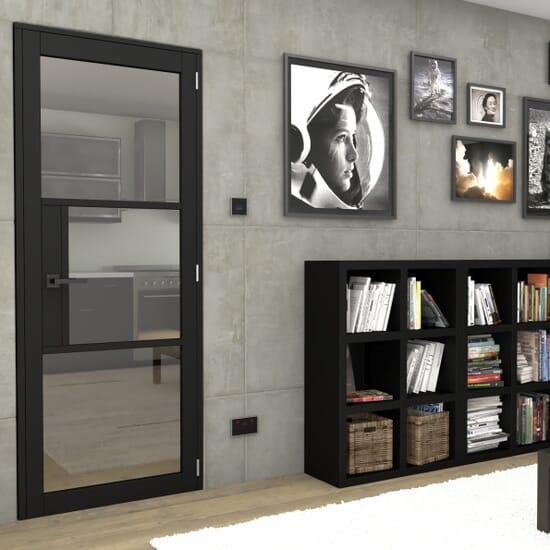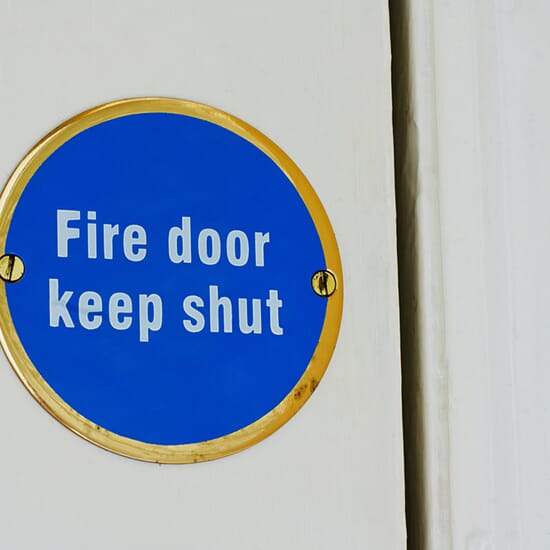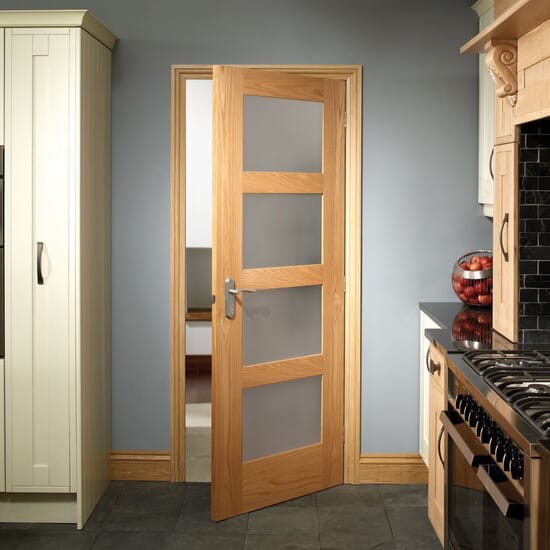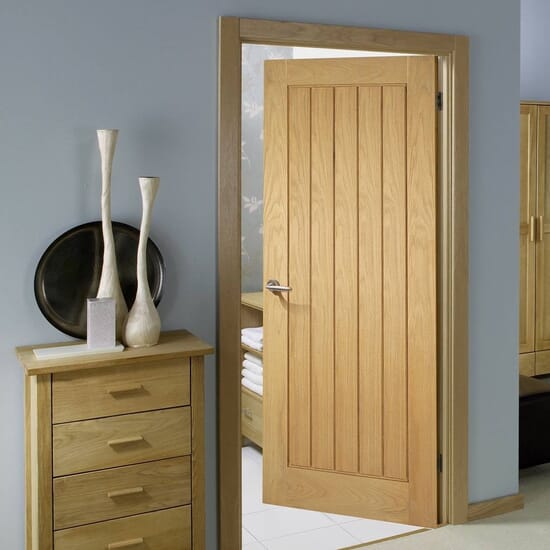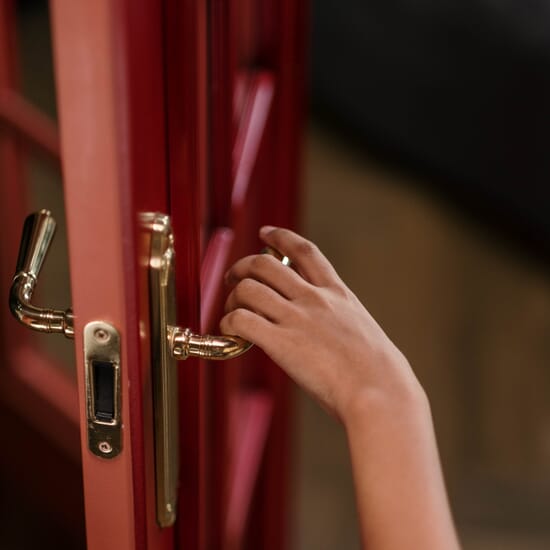uPVC Doors Pros
- Whilst it is still susceptible to degradation over time, uPVC is incredibly resistant against bad weather, particularly rain. The material is nonporous (not permeable to fluid) so any rain water (or any other fluid for that matter) will simply bounce right off it.
- Once they've been built and fitted, uPVC doors won't have any negative impact on the environment and if you want to replace or get rid of them it's easily recyclable.
- Whilst it might very well discolour slightly over time, uPVC generally requires very little maintenance.
- Wood may warp and change shape over time as it gets wet and dries out. As it's nonporous, this is not the case with uPVC, which will remain in a stable shape and structure throughout its lifespan.
- The lifespan of uPVC doors is expected to be around 35 years, though obviously this will depend on not only the quality of the material, but how well it's been fitted.
uPVC Doors Cons
- As stable and convenient as they might well be, uPVC doors can be uninteresting to look at. They are plain and often people want a more stylish design for their property.
- Due to the nature of the material, uPVC is not as flexible in its design options as other materials.
- Whilst it offers a host of benefits, uPVC can cheapen the look of older 'character' buildings, especially buildings which use their characters as a major selling point.
- It might be incredibly eco-friendly once it's safe and sound framing your door, but uPVC is (at the end of the day) a plastic product so whilst it's being created, it does require a lot of crude oil for production and will give off environmentally harmful fumes.
- It should remain in perfect condition for at least a good couple of decades, but as it reaches the end of its lifespan, uPVC can become a shadow of its former self. It also breaks down over time, so once it's gone, it's gone. Unlike wood (which can be fixed in most cases), once uPVC has broken down it will need to be scrapped and replaced.
- Wood comes from trees, and no matter how many trees we cut down, there is always the option of planting more. The creation of uPVC however, is heavily reliant on finite supplies of oil, which will run out eventually.
Oak Doors
With oak doors, you'll generally have two major options; solid or engineered wood. Here, we'll lay out the pros and cons of both.
Engineered Oak Wood Doors
Engineered wood involves a little more work than solid wood, as it consists of multiple layers. It can also be called 'manufactured' wood, and refers to any wood product that has been manufactured by binding or fixing boards, veneers, fibres or strands of solid wood together. Engineered wood will generally have been engineered to fit a specific purpose, so will generally be more flexible than solid wood, but there are exceptions. Engineered wood is generally manufactured by using adhesives to fix the various parts together, which are then clampt to create a tight, seamless bond.
Engineered Wood Doors Pros
- Engineered wood consists of a layer of wood selected due to its innate beauty and character, which is then bonded to another wooden surface. Because engineered wood has been treated and consists of multiple layers there are more options available when it comes to more intricate designs and textures. The extra layers are obviously also a benefit
- Engineered wood yields extra strength and is less likely to split, crack or warp than solid wood.
- Engineered wood is generally more uniform in appearance because it is shaved off a thick piece of wood, and as the knots are smaller, they are less likely to split the veneer when it's being shaved.
- Engineered oak doors will be more expensive than uPVC, but cheaper than solid oak.
- If your door has an oak veneer, very few people will be able to tell the difference between a solid oak door and an engineered door.
Engineered Wood Doors Cons
- If it's maintained well, solid oak wood can last a lifetime, whereas engineered wood will eventually need to be replaced.
- If you're going for a rustic look, engineered wood just doesn't have the same feel as a solid piece.
- If the veneers are too thin then it will make sanding and refinishing/varnishing more difficult.
Solid Oak Doors
As the name implies, solid oak is a solid piece of timber that will have been cut from an oak tree, milled into shape and then dried, with little else done to improve or change it. Solid wood has been used for hundreds of years, so is generally a safe bet, but should probably be avoided in environments prone to moisture such as cellars and basements. For a front door, however, it can be an attractive and durable option.
Solid Oak Doors Pros
- You'll generally find cleaner, simpler designs, due to the nature of working with solid wood. That being said though, a lot of solid wood is made from chunks of wood that still have lots of knots and interesting patterns in them. It varies from piece to piece.
- Solid oak is incredibly stable and some would say more 'organic' and natural looking as it's a genuine “what you see is what you get” wood.
- It's generally easier to repair surface damage to solid wood.
- As solid oak ages, it will gain more depth and character.
Solid Oak Doors Cons
- Solid oak is also more likely to warp than engineered wood, as it's a natural product that moves when moisture comes into contact with it. This means the wood could crack and split naturally due to changes in the humidity of your home from season to season. That is why it’s important they are treated correctly with a hard-wax oil that protects it from moisture.
- Though the cleaner and simpler designs might be seen as a bonus to some, to others it will come across as quite generic and dull.
- Solid oak is generally more expensive than both engineered wood and uPVC.
While all materials have their pros and cons, it's up to you which will be the best fit for your home. You can check out our full range of engineered oak external doors here, including many beautiful glazing options like the Milldale External Oak. If you have any questions about our external doors, get in touch with a member of our team who'll be happy to help.
In Summary
UPVC doors are often a cheaper alternative than wooden or composite doors, are very low maintenance and thermally efficient, however the material choice is not as eco friendly as other alternatives.
Wood doors on the other hand are better for the environment, have an even greater thermal efficiency and are a lot more aesthetically pleasing – they are also more versatile as you can paint and varnish them to your taste. Ultimately it might be down to little more than personal preference, but whatever decision you make, choose wisely. If you've not made your mind up, consider some of our fantastic bifold doors! It is always a good idea to ensure that you match the material of all of your external doors, windows and patio doors.

